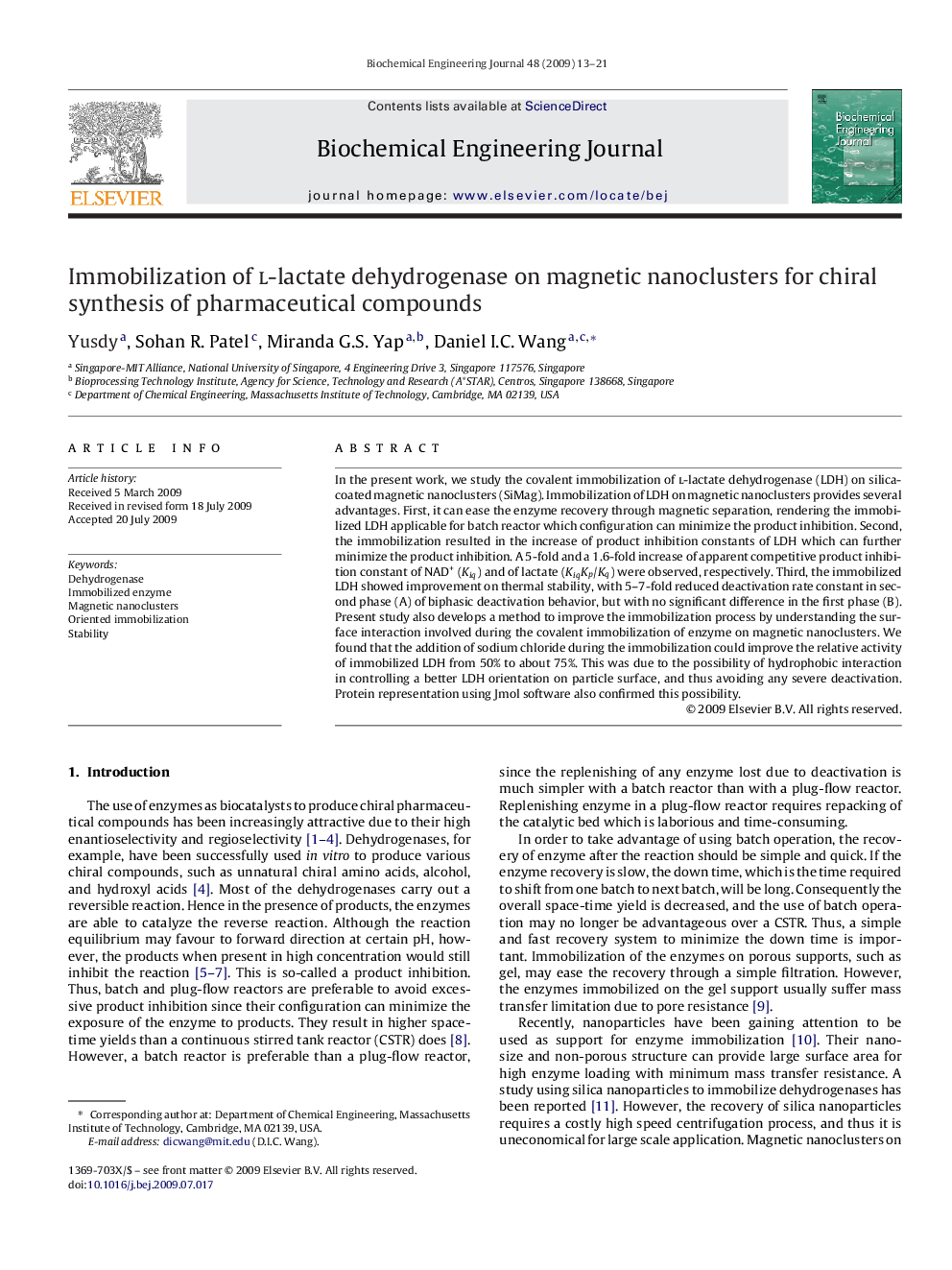| Article ID | Journal | Published Year | Pages | File Type |
|---|---|---|---|---|
| 4048 | Biochemical Engineering Journal | 2009 | 9 Pages |
In the present work, we study the covalent immobilization of l-lactate dehydrogenase (LDH) on silica-coated magnetic nanoclusters (SiMag). Immobilization of LDH on magnetic nanoclusters provides several advantages. First, it can ease the enzyme recovery through magnetic separation, rendering the immobilized LDH applicable for batch reactor which configuration can minimize the product inhibition. Second, the immobilization resulted in the increase of product inhibition constants of LDH which can further minimize the product inhibition. A 5-fold and a 1.6-fold increase of apparent competitive product inhibition constant of NAD+ (Kiq) and of lactate (KiqKp/Kq) were observed, respectively. Third, the immobilized LDH showed improvement on thermal stability, with 5–7-fold reduced deactivation rate constant in second phase (A) of biphasic deactivation behavior, but with no significant difference in the first phase (B). Present study also develops a method to improve the immobilization process by understanding the surface interaction involved during the covalent immobilization of enzyme on magnetic nanoclusters. We found that the addition of sodium chloride during the immobilization could improve the relative activity of immobilized LDH from 50% to about 75%. This was due to the possibility of hydrophobic interaction in controlling a better LDH orientation on particle surface, and thus avoiding any severe deactivation. Protein representation using Jmol software also confirmed this possibility.
